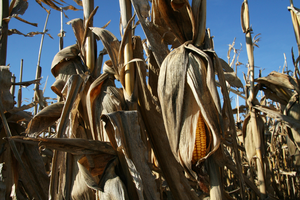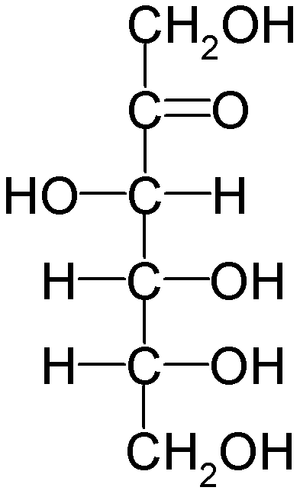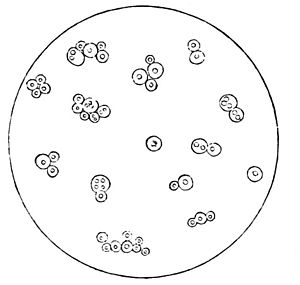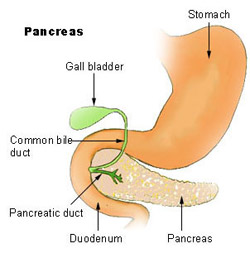The Food Based Sweetening Products

This is probably the most depressing of the articles on sweeteners. We all love choices. We all want to choose the best and healthiest sweeteners. But sadly, in all the abundance of products there is very little to choose from and all the choices are bad. Still, I have tried to give some hope. Clearly some of these sweeteners are less bad than others. I do what to emphasize that none of these sweeteners are likely to do much harm in small amounts and any of them can decrease your quality and length of life in large amounts.
The difference between these refined food based sweeteners is their composition. They are all made up of fructose, glucose or sucrose or some combination of the three. Since sucrose is rapidly broken down to its components (fructose and glucose) any of these sugars can be seen as a ratio of its fructose/glucose content).
Another difference is the degree of sweetness per cup. The sweeter the sugar the less you need to achieve a given degree of sweetness in a recipe. Fructose is quite a bit sweeter than sucrose and glucose is less sweet than sucrose. Invert sugar is simply sucrose broken down to fructose and sucrose. The total sweetness of one invert sugar (one molecule of fructose and one molecule of glucose) is about 130% higher than when these same molecules are combined into one molecule of sucrose.
The third difference is the presence and quantities of any additional trace nutrients. A few of these products have s notable amount of minerals and many have trace amounts. I would suggest that choosing a unhealthy luxury food based on its vitamin and mineral content may not be too logical. At best, moderate amounts of these sweeteners only a small amount of our overall dietary mineral needs can be met.
I have listed the sweeteners more or less in order of descending preference according to two criteria. First by the ratio of fructose to glucose. Generally, as emphasized in the previous article the less fructose the better. Secondly where two sweeteners have about the same ratio of fructose to glucose I have listed those with less sucrose first, as these will be somewhat more sweet than those with more sucrose.
My guiding principle is avoid fructose, but if there is fructose in your sweetener it is slightly preferable to get it as simple fructose rather than as sucrose, because you will need a bit less to get the same degree of sweetness.
Cellulose and starch are polymers (chains) of glucose. Neither are sweet. Starch is readily converted to glucose, mostly in the small intestine, so it does not activate the taste buds of the tongue. But metabolically is pretty much the same as eating sugar. However, some starches (called resistant starches) are broken down slowly and may useful as prebiotics, feeding beneficial microbes in our gut and not being absorbed. Cellulose is not digested significantly by humans and so is classified as a fiber. Fiber has many benefits, depending on type.
Glucose based sweeteners.
These first three products are made of primarily glucose. Bakers often prefer them because of their moisture retaining propertie

s.
Glucose/ Dextrose is available as dextrose or “grape sugar” – It is made from corn starch. Because it is glucose it is about 70% the s
weetness of sucrose.
Corn Syrup – Not to be confused with HFCS (high fructose corn syrup) is generally mostly glucose. However, it contains some fructose which varies in percentage depending on the source of corn syrup. Unfortunately, the percentage of fructose may be impossible to ascertain.
Glucose syrup is similar to corn syrup but more reliably close to 100% glucose. It is generally made from corn starch, but check the label if you are gluten sensitive as it may also be derived from wheat.
Mixed Fructose / Glucose sweeteners
Honey is 50% fructose and 50% glucose. It contains no sucrose. It is about 85% as sweet as sucrose. It contains small amounts of some minerals (especially iron and manganese). Sadly, much of the domestic honey supply apparently is artificially produced from white sugar. I have conflicting information as to the legality of this.
Invert sugar is just a mix of 50% glucose and 50% fructose. It is sometimes referred to as artificial honey.
Maple Syrup – Real maple sugar is derived from the sap of a few species of maple trees. It is essentially unrefined except to concentrate it by boiling off most of the water. It is composed mostly of sucrose. It contains small amounts of some minerals (especially potassium).

Sucrose is 50% fructose and 50% glucose. Sucrose is a disaccharide made of one molecule each of fructose and glucose. Common table sugar made from sugar cane or sugar beets is pure sucrose. Most fruits contain a mixture of sucrose, glucose and fructose. It is easily split into its component sugars by digestion in the mouth and in the small intestine (by the enzyme amylase). When it is split in the small intestine it can speed up the the absorption of the sugar into the bloodstream compared to honey or invert sugar (see below).
The following three sweeteners are made from sugar cane or sugar beets and contain almost pure sucrose. Depending on the degree of refining they may also contain small amounts of minerals (especially manganese, copper, iron, calcium, potassium and magnesium). Of course a better source of these is simply blackstrap molasses which is pretty much what is left of the sugar cane after the fiber and sugar are removed.
Evaporated cane sugar is primarily sucrose it contains small amounts of some minerals. A similar product is called sucanat. These are derived from whole sugar cane juice.
Brown sugar goes by many names. Most forms of brown sugar are just white sugar with a small amount of molasses added back. Molasses is a by product of sugar making and contains most of the minerals removed in the refining process. Some brown sugar is less processed than white sugar.
White sugar is pure sucrose derived from sugar cane or sugar beets.
High Fructose Corn syrup is corn starch that is has been treated with enzymes to convert some of the glucose into fructose. There are different grades of HFCS ranging from about 42% to 90% fructose. At the lower end it is basically invert sugar, at the higher end it is almost pure fructose.
Fruit concentrates – The sugar composition of various fruits will be discussed in a future article. But since fruit juice concentrates are sometimes used as sweeteners a few points will be made here. Most fruits contain free fructose and glucose in relatively equal proportions (such as grapes). Apple and pear juice contain a high percentage if fructose (approx. 70%). Plum contains mostly glucose (approx. 30%). Many of these fruit concentrates also contain beneficial nutrients including minerals and flavinoids (more on this later).
High Fructose sweeteners.
Many of these have been hyped based on their low glycemic index. The only thing that gives them a low glycemic index is their low glucose levels. The following sweeteners are mostly fructose. As discussed previously, large quantities of fructose are probably far more detrimental than glucose.
Coconut Sugar is made from the flower nectar of coconut and other palms. It is fairly unrefined. It probably is mostly fructose, although, precise numbers are difficult to come by.

Agave syrup has developed quite a reputation as a healthy sweetener. This seems to be totally undeserved. My best guess it that this is due to our perennial desire to have a healthy sweetener combined with the romance of tequila and Mexico. We are encouraged to imagine it just naturally dripping from these rugged plants. In actuality it is a highly refined product containing 56% – 92% fructose. Again the amount of fructose is variable and difficult to determine with any particular product. At its best it may not be much worse than white sugar, but it certainly is no better.
Natural Sugar Alternatives
Sugar Alcohols – In the following article I will discuss a number of sweeteners known as the sugar alcohols (glycerol, xylitol, erythritol, and maltitol). Some of these may be less harmful than the sugars mentioned above and perhaps even beneficial. Some of them (xylitol) are found in small quantities in fruit and other foods.
Fructose, the Evil Health Food (Sweeteners part 3)
When I was a child fructose was sold as a health food. It was promoted as vastly superior to sucrose (which was often referred to as “white death” by the health food fadists). Fructose sounds like a wonderful substance. Its very name comes from the Latin for fruit – Fruktus (which itself comes from the root Fruor – to enjoy). It’s got to be good for you.

Fructose is part of our natural evolutionary diet. Fructose is second only to glucose in terms of quantities of sugars consumed. It is found in foods both as a monosaccharide (alone) and as joined with glucose as the disaccharide sucrose. Most fruits contain all three sugars glucose, fructose, and sucrose (glucose and fructose bonded together) in various proportions.
Fructose has two properties which were thought to give it superiority:
- It is much sweeter (1.7x) than sucrose, so less is needed.
- It is not metabolized like glucose, and it does not utilize insulin in its metabolism and was therefore erroneously believed to not create insulin resistance or to metabolic syndrome (see previous blog).
But is it really superior to other sugars?
Since the availability of table sugar which is composed of half fructose the average consumption of fructose has skyrocketed. Now fructose is also readily synthesized from starch to make products such as high fructose corn syrup. And now with the promotion of healthy sounding products such as agave syrup, Fructose the Evil Health Food has returned.
But not so fast! If it is not metabolized like glucose what does the body do with it. Five major problems arise from excess fructose consumption.
- Bacteria and yeasts can readily use it as a food source. Just like glucose, fructose contributes to dental caries, and chronic Candidiasis.
- Although it is indeed sweeter, it does not tend to produce the hormone (leptin) that gives us a feeling of satisfaction and fullness. So we tend to eat more of it.
-

Fatty Liver on CT scan Fatty Liver on CT scanOnce it is partially metabolized, like glucose, it can be used as energy or converted into fat. The problem is that its metabolism is extremely stressful to the liver. These metabolic issues of fructose can result in generalized inflammation, fatty liver, increased blood fats, insulin resistance, and metabolic syndrome (see previous article). With frequent exposure and high concentrations, fructose acts more like a liver poison than a food.Fructose is seven times more reactive than glucose. It can react with our tissues and form something called A.G.E.s (advanced glycolization endproducts). These reactions permanently damage tissue. You can think of age spots throughout your body including the vital organs such as our brain and heart. A.G.E.s have been associated with Alzheimer’s and heart disease. Essentially, excessive fructose causes premature aging.
- The biggest problem is related to how humans metabolize fructose. Fructose is entirely metabolized in the liver.
- Some people do not absorb fructose easily from the small intestine. This malabsorption can cause indigestion, bloating, and gas as the intestinal bacteria have a feast.
Sweeteners high in fructose are often hyped for their low glycemic index. This is really a type of false advertising. Glycemic index is a reference for how fast glucose is absorbed into the blood stream after ingesting a particular food. If a substance doesn’t have any glucose of course it has a low glycemic index. Yes, it is great that fructose isn’t glucose. But it is terrible that is fructose.
Basically, when it comes to a contest of which is better for you fructose or glucose it a matter of the lesser of two evils. Both are bad in excess, but fructose clearly causes the most permanent damage.
Fruit obviously can be healthful. Most of the nutritive (caloric) sweeteners (such as honey, sugar, HFCS, agave syrup, maple syrup, etc.) also contain both glucose and fructose. Are any of these better than another? In the next article I will discuss some of the foods containing glucose, fructose and sucrose to help you decide how much is safe and which of these foods have other benefits to outweigh the harm.
Featured Supplements
These are available in the office or click on the link for further information or to order them at the Dr. Michels Internet Store. If you are not sure what might be of the most benefit call for a consultation.
LVR Formula by Pure Encapsulations -A broad-spectrum, synergistic combination of concentrated herbal extracts that nutritionally supports liver function and protects the liver from free radical damage that can impair proper functioning.
CarbCrave Complex by Pure Encapsulations – CarbCrave Complex is designed to help curb excessive carbohydrate intake and to help moderate appetite by supporting healthy brain chemistry and mood.
Alpha Lipoic Acid by Pure Encapsulations – A water and lipid soluble antioxidant; supports glucose metabolism and nerve health. Alpha Lipoic Acid is a multifunctional, versatile nutrient that plays a key role in the antioxidant network and the metabolic process. Protective for the liver and to help prevent AGEs.
Bioflavinix by Pure Encapsulations – Bioflavonex combines natural, concentrated bioflavonoid extracts for cardiovascular, liver, and cellular antioxidant protection. Contains grape seed, green tea, ECGC, milk thistle, resveratrol.
Resveratrol by Pure Encapsulations – Resveratrol is a compound often associated with the health benefits of red wine, because of its powerful antioxidant and cardioprotectant properties. It promotes cardiovascular health through its antioxidant action and its ability to promote healthy platelet function and maintain healthy arachidonic acid metabolism. Pure Encapsulations Resveratrol is derived from one of the richest known sources, Polygonum cuspidatum, an herb utilized for centuries. Protective against the damage of metabolic syndrome and helps prevent AGEs.
Antioxidant Formula by Pure Encapsulations – AntiOxidant Formula offers a synergistic, broad spectrum of antioxidants designed to protect against free radical damage in every cell of the body. Contains NAC, milk thistle, fat soluble vitamin C, mixed carotenoids, natural vitamin E, selenium, riboflavin, and zinc.
 (Click here for last article – Glucose: The Essence of Sweetness)
(Click here for last article – Glucose: The Essence of Sweetness)
.
Glucose – The Essence of Sweetness (Sweeteners part 2)

Glucose is the major dietary sugar. Its very name is derived from the word for sweetness in Greek (glukus). It is a major source of energy production of most life.
Glucose can be found alone as a simple sugar (or monosaccharide) or combined with itself or other sugars into bigger molecules. When sugars are bonded in pairs they are know as disaccharides. Two glucose molecules together is called maltose. The other main disaccharides are sucrose and lactose. These both contain one glucose molecule attached to another simple sugar (fructose and galactose respectively). Maltose is made during the enzymatic breakdown of starch such as occurs in sprouting. Lactose is the sugar found in milk. Sucrose is common table sugar and is in many natural fruits. These sugars will be discussed in more detail in future articles.
Longer chains of glucose can come in two major types, starch and cellulose, but only starch can be broken down into glucose by our digestive systems (by enzymes in our saliva and small intestine). .Cellulose on the other hand is a dietary fiber meaning humans don’t have the enzymes to break it down into sugars. It remains in our gut as bulk and food for microbes.
Sweetness being a result of the specific interaction of these substances with the taste buds (receptor organs on the tongue) is variable. Sucrose is taken as the standard and is given a sweetness rating of 1. Glucose is almost as sweet with a rating of .0.7. Maltose is not very sweet and has a rating of about 0.4 (less than half as sweet as sucrose). Lactose is less sweet still with a rating of 0.16. Starch and cellulose don’t taste sweet (except that a small amount of starch is broken down to glucose in our mouth by salivary enzymes).
These naturally occurring sugars can all be metabolized to form biological energy. Glucose is the major energy source of many animals including humans. If glucose is so important why should it be a health concern? The simple answer is that sugar is a necessary important nutrient; IF it is consumed in the forms and quantities we are adapted to in balance with the other macronutrients, and with the essential micronutrients needed to properly use it and avoid its harmful effects.
Our evolutionary diet (often referred to as the Paleolithic diet) contained relatively small quantities of mono and disaccharides. Starches were also a smaller part of the human diet and were rarely available in concentrated forms, but combined in wild foods with lots of fiber and other nutrients. They were also generally eaten with significant amounts of animal foods with abundant protein, fat and other nutrients.
Any change from the diet we have adapted to over millions of years is bound to cause a multitude of health consequences. Below I will introduce three major issues that can result from increasing glucose as sugars and starch in our diet.

The first sugar issue I will discuss is dysbiosis and chronic Candidiasis. The second and perhaps most important sugar issue is insulin resistance, metabolic syndrome, diabetes and other associated diseases. Thirdly, I will discuss obesity more specifically.
Dysbiosis and chronic Candidiasis
I mentioned that many animals utilize glucose as a primary energy source. Likewise many bacteria and funguses also are adept at using glucose as a fuel. Our guts, mouths and skin are covered with microorganisms. It is estimated that we are hosts to 10 times as many microbes as human cells in our body. Invasions of undesirable microbes or an imbalance of beneficial or neutral microbes is called dysbiosis. One group of microbes that loves sugar and starch is yeasts. Yeasts are unicellular fungi. The yeasts that inhabit our skin and the mucus membranes of our bowel is called Candida.
When we are healthy these yeasts are kept in balance by certain bacteria, and by our immune system. Antibiotics can kill these beneficial bacteria. The beneficial flora also need proper fiber as a food source and home. Too much sugar and starch can overfeed the yeasts. The results of the decline of protective flora and overfeeding the yeast is overgrowth of the yeast cells. The yeasts expand their territory into tissues where they don’t belong. Worse they can change form and become more invasive, penetrating into the tissues. Still worse they can produce various toxins causing a variety of symptoms. Over time these yeasts can overwhelm the immune system and it no longer is able to keep them in check.
Very long lists of conditions have been attributed to chronic Candidiasis. A few of the more common are listed here: Chronic Fatigue, Syndrome, Irritable Bowel Syndrome, constipation, diarrhea, belching, bloating, sinusitis, chronic headache, muscle and joint pain, and poor concentration.
The science of symbiotic flora is still in its infancy. It is becoming clear that exposure to various microbes and healthy populations of the corrects flora play an important role in the development of the immune system and the mediation of allergies. Tooth decay (dental caries) might also be seen as a form of dysbiosis related to nutrition and sugar. It is caused by an overgrowth of acid forming bacteria, especially Streptococcus mutans on the teeth.
Insulin resistance, metabolic syndrome, diabetes

Genetic predisposition, nutrient deficiencies, central obesity, lack of exercise and excess sugar and starch can cause
these related problems. Essentially, every time we absorb glucose into the blood we trigger an ancient sugar handling mechanism. Special endocrine tissues in our pancreas produce the hormone insulin. Insulin receptors in our tissues signal the tissues to pull the sugar out of our blood and convert it to energy and store the extra as glycogen (a form of starch) in the liver or as fat in our fat cells.
Age combined with the risk factors above cause our insulin receptors become less receptive. When this is severe enough we have diabetes (type 2), too much insulin, little insulin receptivity, too much sugar in the blood. Metabolic syndrome is marked by insulin resistance along with associated increased triglycerides and LDL cholesterol, and high blood pressure. Metabolic syndrome is associated with a much increased risk of cardiovascular disease (heart attack and stroke), diabetes, kidney disease, liver disease, and peripheral artery disease. This is many of the serious degenerative diseases of modern humans.
Obesity
This is both a cause and effect of metabolic syndrome discussed above. I list it separately because obesity is strongly associated with excess sugar and starch intake. We are genetically programmed to crave these substances; especially, if we have ancestors that were subject to periodic famine. Those individuals that ate more hi sugar and starch foods when they were available put on extra pounds that enabled them to survive in times of famine.
In today’s world most of us have continuous access to sweet and starchy foods in unlimited quantity. Worse, these foods tend to stimulate additional craving for more of the same. The results are obvious. In addition to the disease associated with metabolic syndrome obesity is a risk factor for many conditions such as: depression, back pain, carpal tunnel syndrome, osteoarthritis, cancer, sleep apnea, asthma, reflux disease, gall stones, menstrual disorders, and pregnancy complications.
Conclusion
I conclude this article on glucose with some practical ideas and a few of my favorite related nutritional supplements.
Most importantly, avoid excess sugar and starch. Pound for pound sugar is one of the cheapest ingredients added to processed foods, so it is added to many food items in which you wouldn’t expect it. Read all label. Pure glucose is labeled as dextrose and sometimes as grape sugar. Remember that glucose is also ½ of sucrose (table sugar) and similarly a major component of most sweeteners (as will be discussed later in this series). Fruit juice often has added sugars. Even if it has no sugar added, fruit juice is a concentrated food, high in sugars and is best consumed in small amounts and diluted. Dried fruit is also very concentrated. I will discuss the sugar content of various fruits in a future article.
Glycemic index is a useful concept. It is the rate at which the sugars in a food are absorbed into the blood stream. The goal is simply to avoid shocking the system with too much glucose into the blood too fast. I am less concerned with the glycemic index of individual foods than with general eating habits. As discussed above, fibers, fats, and protein all slow down the absorption. Eat slowly and keep in mind that it takes time for your brain to register that you have eaten and that you are full. Eat whole foods when possible. Eat plenty of non-starchy vegetables.
Dr Sears a cardiologist and the originator of the Zone diet suggests the optimal diet consist of approximately 30% of our caloric intake should be carbohydrates (starch and sugar). 40% should be protein, and 30% fat.
Concentrate d sweets like candy and deserts can become an addictive habit. Physically, we become adapted to the stimulation and pick-up and develop cravings. Sugar and starch can also be used as emotional comfort foods. Eliminating the sweets, eating high protein, and nutritional supplements can help with the cravings. But like all addictions we must get the sugars out of reach and out of the house to heal.
d sweets like candy and deserts can become an addictive habit. Physically, we become adapted to the stimulation and pick-up and develop cravings. Sugar and starch can also be used as emotional comfort foods. Eliminating the sweets, eating high protein, and nutritional supplements can help with the cravings. But like all addictions we must get the sugars out of reach and out of the house to heal.
Featured Supplements
These are available in the office or click on the link for further information or to order them at the Dr. Michels Internet Store. If you are not sure what might be of the most benefit call for a consultation.
For Dysbiosis and Candida:
Beta Glucan Synbiotic Formula by BioImmersion Inc. – Powerful combination of Probiotic & fibers for regular bowel habit, weight management: promotes satiety and balances blood sugar. No fillers, flowing agents or excipients of any kind. hardy and viable pedigreed Original strains: 25 billion L. acidophilus, B. longum, L. rhamnosus, L. plantarum, S. thermophilus. organic matrix USDA patented hydrocolloidal beta glucan oat bran , organic whole red beet root and organic inulin from chicory fiber. These fibers also provide a matrix to help establish the probiotics. Available at the office.
G.I. Fortify by Pure Encapsulations – Support the function, microflora balance, integrity, tone, comfort, cellular health and detoxification of the GI tract. Contains: Psyllium, flax, l glutamine, DGL licorice, marshmallow root, aloe vera, slippery elm, and triphala.
Nutri-Flax by Pure Encapsulations – Flax seed fiber in capsules. High quality fiber to promote healthy flora.
A.C. Formula II by Pure Encapsulations– Herbal formula to control Candida and promote healthy flora.
For Glucose Metabolism:
PureWeigh Premeal beverage by Pure Encapsulations– Designed to reduce appetite, cravings, boost energy as a pre meal beverage or meal substitute. Contains, protein (soy and whey), fibers, low glycemic carbohydrates (slo-carb), and vitamins and minerals. French vanilla flavor.
GlucoFunction by Pure Encapsulations – is a combination of key nutrients, antioxidants and herbal extracts designed to promote healthy glucose uptake and metabolism, microcirculation, and pancreatic function to support healthy glucose utilization.
CarbCrave by Pure Encapsulations – Supports healthy neurotransmitter metabolism, affecting the appetite and mood centers of the brain. 5-HTP is a precursor for serotonin, the same neurotransmitter released by the consumption of carbohydrates and associated with enhanced mood. dl-phenylalanine supports dopamine and epinephrine production, responsible for the sensation of well-being. Vitamin B6 is integral as a cofactor for neurotransmitter synthesis. Rhodiola and ashwagandha are believed to encourage the activities of these neurotransmitters while strengthening the body’s resistance to stress and fatigue, common triggers for undesirable eating behaviors.
Gymnema Sylvestre by Pure Encapsulations – Traditional herb used for improved pancreas function and glucose metabolism. Balances blood sugar, reduces sugar cravings.
Nutrient 950 by Pure Encapsulations– is a complete hypo-allergenic, high-nutrient, bioavailable multi-vitamin, multi-mineral and trace element supplement. It offers an advanced mineral delivery system, and the highly desirable coenzyme forms of B vitamins to promote optimal absorption of the nutrients. In addition, it provides a high profile of free radical scavenging antioxidants. This is a gentle, hypo-allergenic formula which is well tolerated by sensitive individuals. Available with and without iron.
Too Much Sweetness – Sugar and Sweeteners

Many of you saw my Halloween costume as Dickens’ Ebenezer Scrooge. Some asked if I was the good scrooge or the bad Scrooge. I replied that I was drawn to the character as a representation of positive transformation especially in response to confronting our own mortality. It the spirit of the transformed Scrooge I waited till the end of the holiday season to publish this article on the detrimental effects of excess dietary sugar. Hopefully, you have had your fill of sweets and are ready to shift to a healthier diet in the New Year.
I preface this article with the belief that I am not a purist, nor do expect others to be so. Rather I believe in choosing your vices wisely.It is important to know which vices are likely to kill or maim you before your time;. and to know how to ameliorate or reduce the risks. The purpose of this series of articles is not to point a finger at your indiscretions but to provide information to help you make choices.
This will be a series of short articles on sweeteners in our diet. This first one will be a general discussion and the next few will go into more detail on some of the different nutritive and non-nutritive choices available.
Sweetness can be defined as a subjective experience of the brain that normally occurs when sweetness sensors in the tongue become activated. This activation occurs when the sensors are exposed to chemicals of a certain shape The most commonly occurring natural substances that we perceive as sweet are sugars.
Biologists have shown a preference fro sweets as far back as many motile bacteria. Most animals show a clear preference for sweets (felines (cats) are an exception with no ability to taste sweet). Primates have a well developed sweetness sense. Considering there is no need in the human diet for sugar one might ask why did the desire for sweets evolve?
Through most of human existence the only sweets we normally encountered was fruits and berries. These are a source of calories which were often in short supply. In addition most wild fruits had far less sugar than modern domestic varieties. It was difficult to over-indulge in sugars except perhaps seasonally when a few extra pounds might also have some survival value to hold us over in less abundant seasons.
In addition, wild fruits tended to be small with a much higher ratio of skin and seeds to pulp (containing the sugar). It is the colorful skins and seeds where the beneficial flavinoids and other nutrients are concentrated.
 Today we have a much bigger selection of sweets. Here are some examples of sweets available now that were not available to our Paleolithic predecessors.
Today we have a much bigger selection of sweets. Here are some examples of sweets available now that were not available to our Paleolithic predecessors.
- Sweeter and concentrated fruits and juices available all year
- Refined sugars taken from natural sources
- Chemically, genetically, and enzymatically altered natural sources
- Natural and artificial non- nutritive sweetenerMany of these natural and synthetic substances can have negative health consequences. I will review all of these in upcoming articles as follows.
- The major dietary sugars glucose, fructose, sucrose and lactose.
- The major sweeteners and sweet foods including fruit, juice, table sugar, high fructose corn syrup, honey, agave syrup, maple syrup, date sugar, coconut and palm sugar.
- The sugar alcohols including xylitol, erythritol, and maltitol
- Stevia (from the herb)
- Synthetic sweeteners – Including Splenda (sucralose, Nnutrisweet (aspartame), sacchararin, and others.
In the mean time give some thought to how much sweetness you need in your diet. Many report that mildly sweet foods taste sweeter and appreciation of healthy food in general increases with avoiding overly sweetened foods. Most traditional cultures have balanced their desire for sweetness with appreciation for other flavors including bitterness. Seek balance. You can have too much of a good thing.
We are all deficient in vitamin D.
First the good news. We evolved in a sunny tropical or subtropical climate in Africa. We spent most of the day in the sun that for most of the day was high enough in the sky to allow us to produce high amounts of vitamin D in our skin. We evolved dark melanin pigments to protect our skin from the intense sun. In spite of dark skin we produced an abundance of vitamin D.

Vitamin D is not really a vitamin at all. It is more akin to a hormone, a substance produced in one part of our body that modifies the physiology in other parts of our body. Essentially hormones are chemical messengers. Technically, vitamin D is a prohormone that is converted to the hormone calcitrol as needed. Its functions evolved over 750 million years ago in ocean plankton.
Vitamin/prohormone D affects many tissues including bone, the immune system, and the brain, skin and endocrine systems. It is known to be useful in the prevention and treatment of many cancers, autoimmune diseases including MS and lupus, many types of infections, depression, als, parkinsonism, autism, learning disabilities, heart disease, and diabetes.
Here is list of about 100 conditions that may be related to vitamin D deficiency. http://www.vitamindcouncil.org/health-conditions/
The other good news is that vitamin D is fat soluble and stored in our fat tissues. It takes weeks or months to deplete a healthy individual with good stores of vitamin D.
Now the bad news. In Oregon and indeed most of the United States and the temperate regions of the globe most of us our deficient in vitamin D.
There is simply not enough intense sunlight for our skin to make vitamin D. Most of us are generally clothed over most of our bodies and even if we were exposed to the sun it only has enough intensity for a few hours in the summer and on the sunniest winter days its light is impotent as far the essential uv wavelengths go to penetrate the skin.
If you are interested in estimating you likely vitamin/hormone D production from the sun a solar calculator that takes into account our latitude, cloud cover, season and time of day and skin color. Here is one such calculator… http://www.natureshelpermedical.com/Vitamin_D_Calculator.html
When the Africans migrated into Europe over a period of generations they lost much of their pigmentation. Those with darker skin were much more likely to succumb at a young age from a variety of diseases caused by vitamin deficiency. If you are fortunate to be one of the surviving light skinned mutants your light needs are indeed less. But don’t be fooled into believing you are just fine in an Oregon winter.
One more bit of good and bad news. The good news is that we can absorb and utilize vitamin D taken orally. The bad news is that vitamin D essentially occurs rarely in foods.
Historically the recommended levels of vitamin D were based on the amount needed to prevent rickets (bone deformites caused by the deficiencies affects on calcium metabolism). Now we know much much higher levels are needed to optimally protect against the multitude of diseases related to deficiency. Additionally, we have learned it is difficult to get too much vitamin D. Generally, more is better than less. Some people don’t seem to be able to easily raise their vitamin D levels. Several nutritional cofactors are needed, especially adequate magnesium. It is also important to take the most bioactive form of vitamin D known as vitamin D-3 or cholcalciferol.
The 25-hydroxy vitamin D test is the most accurate way to measure how much vitamin D is in your body. Normal range is generally considered to be about 30.0 to 74.0 nanograms per milliliter (ng/mL). But for serious illness levels of up to about 100 ng/ml may be desirable.
In the absence of blood tests I am comfortable with a daily dose of 5,000 iu /day and even 10,000 iu /day for a few months for adults. For children over two years old I am comfortable with 2,000 iu /day and twice that for a few weeks at a time. Here are the amounts suggested by the Vitamin D council. http://www.vitamindcouncil.org/about-vitamin-d/how-to-get-your-vitamin-d/vitamin-d-supplementation/
- Healthy children under the age of 1 years – 1,000 IU.
- Healthy children over the age of 1 years – 1,000 IU per every 25 lbs of body weight.
- Healthy adults and adolescents – at least 5,000 IU.
- Pregnant and lactating mothers – at least 6,000 IU.
I keep different vitamin D supplements at my office to fit the needs of different ages and preferences.
- Pure encapsulations 5,000 iu caps
- Pure encapsulations 10,000 iu caps
- Pharmax 1000 iu chewable tables
- Biotics Bio-D-Emulsion Forte 2,000 iu/drop
Come in and get some or go to our pure encapsulations store or web store.


